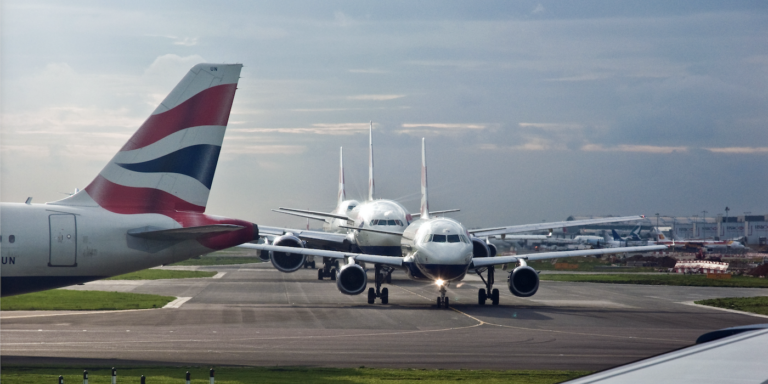The UK’s Department for Transport has published new aviation guidance, which sets out the measures that operators should put in place to protect staff and passengers flying during the Covid-19 period.
The guidance, produced by the government’s International Aviation Taskforce, in collaboration with the aviation industry, also provides advice for passengers on how to travel safely and on how to follow social distancing measures at each stage of their journey, from checking the public health requirements before booking a flight, to navigating the airport safely and boarding the flight or leaving the airport.
According to the government the guidance has been prepared in line with international best practice, and is the culmination of an ‘extensive programme of engagement’ between the UK Government, the aviation industry and public health experts. The guidance outlines a framework for the industry to operate from once travel restrictions are lifted and when it is safe to do so, helping to restore jobs, trade, and opportunities for travel.
The UK transport secretary, Grant Shapps, said, “Today’s guidance is a positive next step towards ensuring a safer and more sustainable aviation sector. The Government’s advice currently remains to avoid all non-essential travel, but today we are taking the necessary steps to ensure a framework is in place for the aviation industry to bounce back when it is safe for restrictions on travel to be lifted.”
Tim Hawkins, chief strategy officer at MAG (Manchester Airports Group), added, “This new guidance provides the basis for the restart and recovery of the UK aviation industry – it offers clear information for us, our passengers and our airlines on the steps needed to create a safe travel experience.
“The guidance is the result of strong collaboration between Government and the aviation industry, drawing on advice from independent medical and scientific experts who have looked specifically at what safety measures are needed at each stage of the travel process.
“With similar protocols being adopted in other countries, and a targeted approach to reopening travel to low-risk countries, we will have the elements in place to get our economy moving again and protect jobs throughout the whole aviation supply chain,” said Hawkins.
Practical advice includes wearing face coverings when in the airport, washing hands regularly after touching any surfaces, checking in all baggage including hand luggage, and remaining seated as much as possible during flights.
The guidance to operators will also support staff by promoting safe practices and workplaces. This includes extensive cleaning of aircraft, increasing the availability of handwashing and hand sanitiser facilities, reducing face-to-face interactions with passengers, and introducing protocols for symptomatic passengers and staff.
Government support for the aviation industry to date has provided a package of measures, including a Bank of England scheme for firms to raise capital, Time to Pay flexibilities with tax bills, financial support for employees, and the formation of the International Aviation Taskforce – a collaborative approach between Government and the aviation industry – which has been leading on work necessary to plan for the restart and recovery of the sector.





